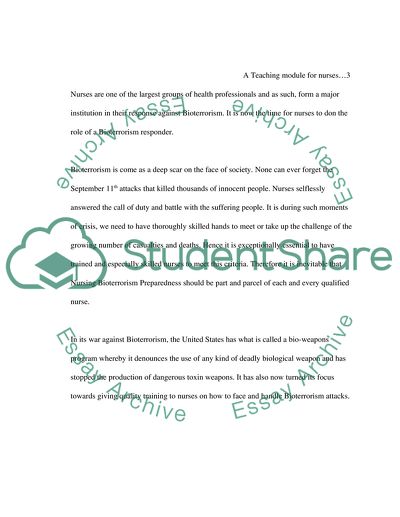Cite this document
(“Biological Weapons and Bioterrorism Essay Example | Topics and Well Written Essays - 2750 words”, n.d.)
Retrieved from https://studentshare.org/miscellaneous/1542931-are-you-prepared-a-teaching-module-for-bioterrorism-preparedness-for-nurses
Retrieved from https://studentshare.org/miscellaneous/1542931-are-you-prepared-a-teaching-module-for-bioterrorism-preparedness-for-nurses
(Biological Weapons and Bioterrorism Essay Example | Topics and Well Written Essays - 2750 Words)
https://studentshare.org/miscellaneous/1542931-are-you-prepared-a-teaching-module-for-bioterrorism-preparedness-for-nurses.
https://studentshare.org/miscellaneous/1542931-are-you-prepared-a-teaching-module-for-bioterrorism-preparedness-for-nurses.
“Biological Weapons and Bioterrorism Essay Example | Topics and Well Written Essays - 2750 Words”, n.d. https://studentshare.org/miscellaneous/1542931-are-you-prepared-a-teaching-module-for-bioterrorism-preparedness-for-nurses.


